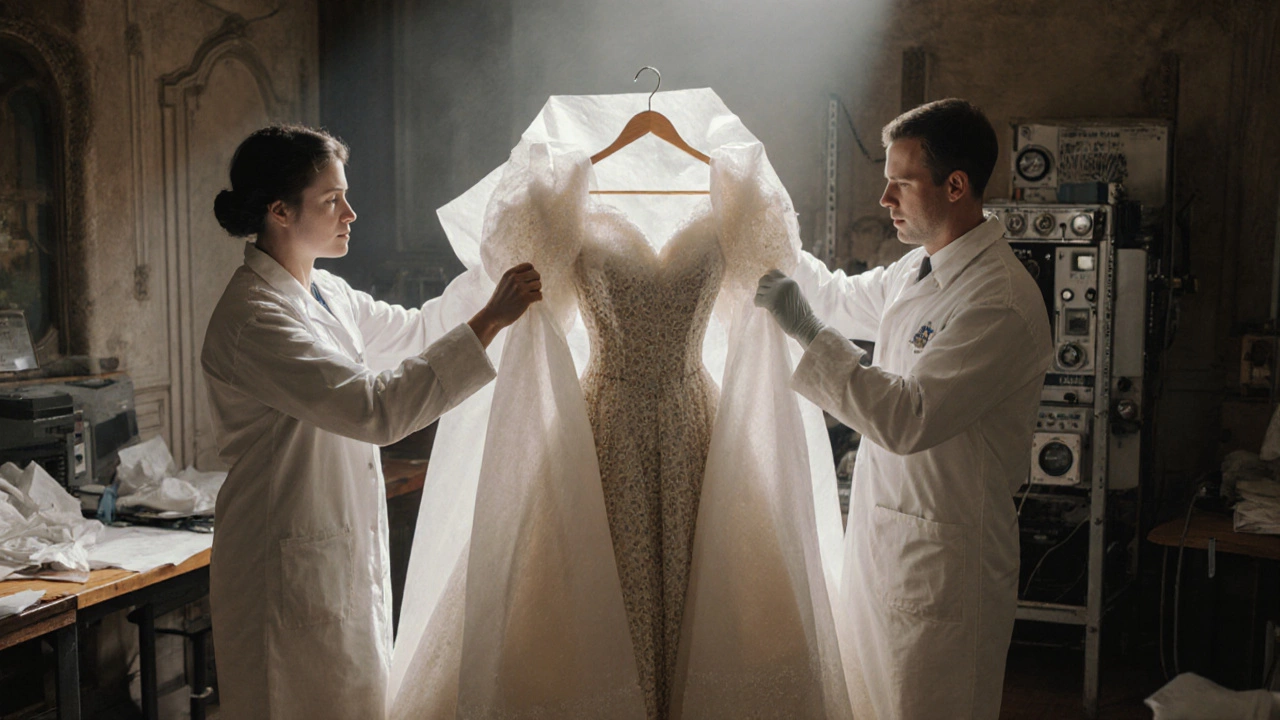When a member of the British royal family passes away, their clothing doesn’t just disappear. royal clothes after death, formal garments worn by monarchs and their close relatives during official duties and ceremonies. Also known as royal wardrobe items, these pieces are often steeped in symbolism, craftsmanship, and historical weight. Unlike regular clothing, royal garments are rarely discarded. They’re treated like artifacts — carefully documented, sometimes restored, and often stored in institutions like the Royal Collection Trust. These aren’t just outfits; they’re tangible links to moments in history — coronations, state funerals, weddings, and public appearances that shaped the nation.
One key aspect is royal funeral attire, the specific clothing worn by royals during mourning rituals and burial ceremonies. This includes black mourning dresses, tailored suits with black armbands, and veils that follow strict protocol. For example, Queen Elizabeth II’s funeral suit was deliberately simple — a dark wool dress with a pearl necklace, echoing her lifelong preference for understated elegance. These items are preserved not for fashion, but for their role in state tradition. Meanwhile, historic clothing preservation, the careful conservation of textiles from royal and aristocratic families. Also known as textile heritage, this field involves climate-controlled storage, light-blocking cases, and specialized cleaning to prevent fabric decay. Many of these garments are too fragile to wear again, but they’re still displayed in exhibitions to educate the public.
Not all royal clothes go into storage. Some are reused — passed down within the family or repurposed for new events. A dress worn by Princess Diana might be altered and worn by Kate Middleton. A sash from a previous monarch’s coronation could be reattached to a new outfit. This isn’t just about saving money; it’s about continuity. The monarchy leans on visual language to show stability, and clothing plays a big part in that. Even the fabrics matter — wool from Scottish estates, silk from British mills, lace made by hand in Buckinghamshire. These details tie the garments to place, people, and time.
What you won’t find are mass-produced replicas or cheap imitations. Royal clothing is custom-made, often by designers who’ve worked with the family for decades. The attention to detail — the exact shade of a button, the weight of a lining — is unmatched. And when someone dies, those pieces become even more valuable, not because of their price tag, but because they’re the last physical trace of a person’s public life. You can’t buy this kind of history. You can only see it in museums, documentaries, or rare auction listings.
Behind every royal garment is a story: who made it, when it was worn, and why it was chosen. The same care that goes into protecting a centuries-old oak chest from damp is applied to these fabrics. Humidity control, mothproofing, and gentle handling are standard — just like the steps we’ve seen in posts about protecting furniture from mold or damp in storage. The principles are similar: control the environment, avoid damage, honor the object.
Below, you’ll find real-world guides on how to care for heirloom textiles, how to store formal wear properly, and how even everyday clothing can be preserved with simple habits. Whether you’re holding onto a wedding dress, a military uniform, or a favorite coat, the same care that keeps royal clothes alive can help yours last longer too.

After Queen Elizabeth II's death, her vast wardrobe was preserved as national heritage. No clothes were sold-instead, select pieces are reused by other royals, archived for history, and occasionally displayed in public exhibitions.
More